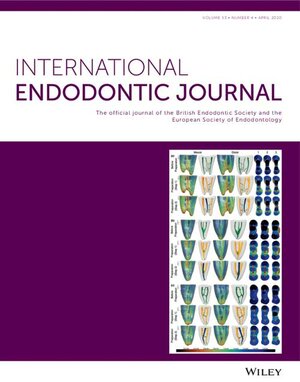The therapeutic potential of naringenin, a natural citrus flavonoid, on pulpal pain and pain-related cognitive dysfunction
Abstract
Aim
Orofacial pain, characterized by discomfort originating from areas such as the tooth pulp, trigeminal nerve and temporomandibular joint, poses substantial challenges in dentistry. Notably, pulpal and periapical pain profoundly impact the quality of life for affected individuals. Recent studies have highlighted a concerning association between pulpal pain and cognitive dysfunction, highlighting the intricate interplay between sensory distress and cognitive processes. Naringenin, a natural flavonoid, has garnered attention for its diverse physiological effects, including pain modulation. This investigation aims to elucidate the therapeutic potential of naringenin in mitigating capsaicin-induced pulpal pain and concomitant cognitive impairments. Additionally, we endeavour to unravel the underlying molecular mechanisms responsible for these observed effects, thereby contributing to a deeper understanding of naringenin's therapeutic utility in the management of orofacial pain syndromes.
Methodology
Pulpal pain induction was achieved through intrapulpal injection of capsaicin (100 μg) in rat subjects. Central administration of naringenin was carried out at doses of 5, 10 and 15 μg per rat. Assessment of learning and memory performance was conducted using the Morris water maze task. Evaluation of inflammatory cytokine expression levels, including TNF-α, IL-1α, IL-1β, COX-2 and IL-6, as well as BDNF and TrkB expression, was performed using real-time PCR analysis.
Results
Capsaicin administration resulted in a notable escalation of nociceptive responses alongside a concurrent decrement in cognitive function within the experimental rat model. Molecular analysis unveiled an upregulation of inflammatory cytokines coupled with a downregulation of BDNF and TrkB expression levels within the hippocampal region following pulpal pain induction. Remarkably, naringenin administration demonstrated a palliative effect against capsaicin-induced pain sensitivity and cognitive impairments, while also attenuating alterations in the aforementioned gene expressions induced by pain stimuli.
Conclusions
Naringenin appears to exert decreasing effects on both dental pain and pain-induced cognitive deficits, likely mediated through its ability to attenuate neuroinflammation and enhance growth factor signalling pathways. Consequently, it emerges as a promising natural therapeutic agent for the management of pain and associated cognitive impairments. Moreover, the intertwined neural pathways governing cognition and pain processing further underscore the complexity of orofacial pain syndromes.

 求助内容:
求助内容: 应助结果提醒方式:
应助结果提醒方式:


